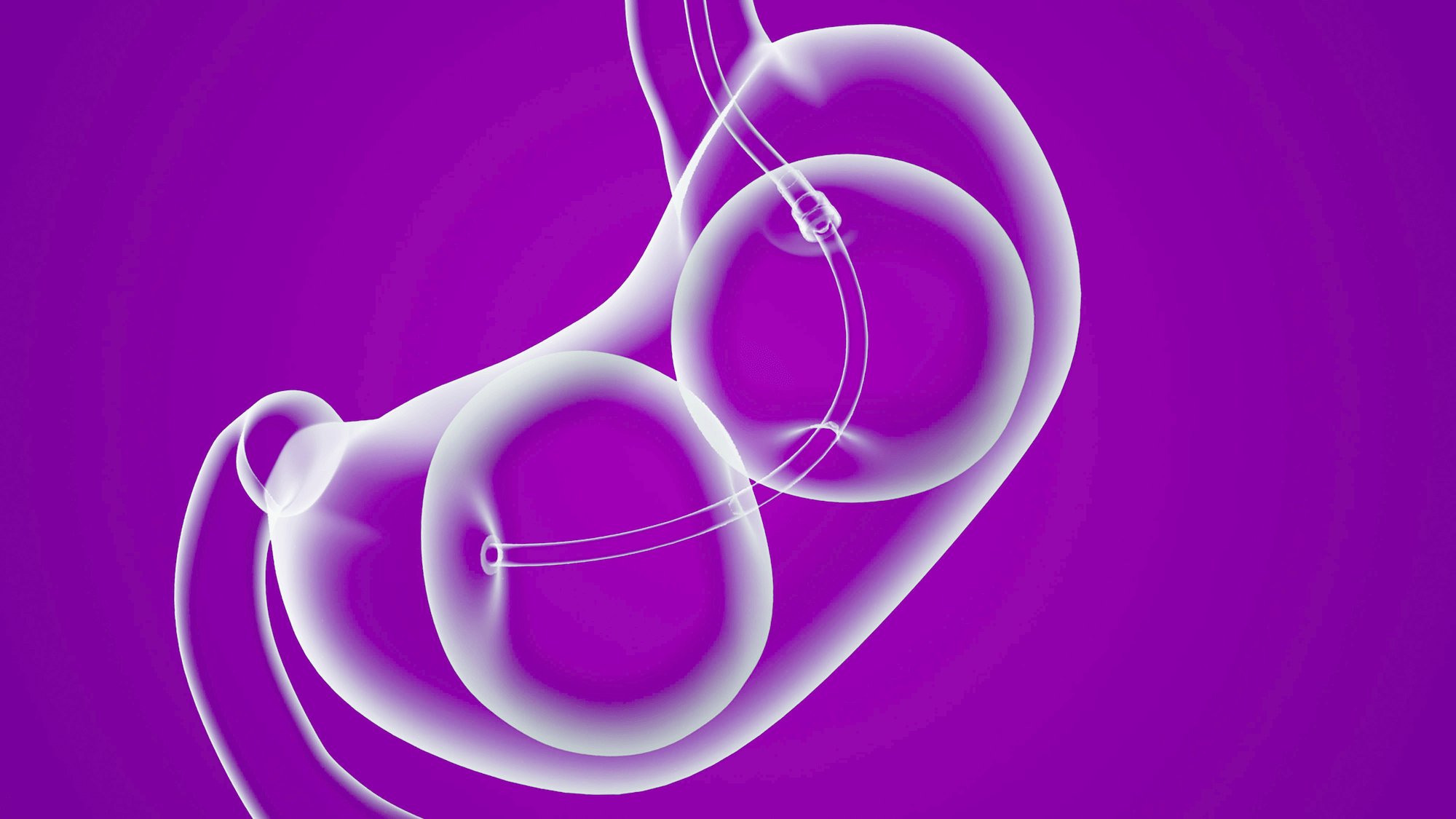Do gastric balloons live up to the claims of their manufacturers? Here we examine the pros and cons of this new, non-invasive weight loss technique.
The concept is fairly simple: weight loss balloons are meant to reduce the amount of available space in the stomach, effectively filling you up so you feel less hungry. Over a period of several months, this helps you shed pounds by limiting your portion sizes and caloric intake.
Compared with more extensive weight loss surgery, a balloon procedure is relatively quick and has minimal downtime. If you have the extra cash to spare and are looking for a surefire way to drop between 30 and 50 pounds, then it may be the right thing for you.
However, there are some drawbacks. While gastric balloons can be a good option for patients with a lower body mass index (BMI), they aren’t considered the best choice for people who are massively obese or have trouble adjusting to a healthy lifestyle. Weight loss balloons are also costly, with most ringing up for $7,000 or more.
And though most balloon systems come with post-procedure weight loss coaching, they’re considered a temporary treatment. A solid exercise regimen and a medically supervised diet are strongly suggested to help keep the weight off after the balloons have been removed.
How Weight Loss Balloons Work
At their core, weight loss balloon procedures are designed to help you limit how much food you eat: the balloon takes up extra space in your stomach after you’ve ingested it, making you feel fuller quicker and less hungry throughout the day.
Depending on the brand you choose, you can either have the balloon inserted orally by swallowing a pill, or through an endoscopic procedure. If you opt for a system that requires the balloon to be introduced endoscopically, the doctor will insert the balloon into your esophagus with the aid of a camera and later detach it in the stomach. The balloon is then filled with a saline solution, gas, or air.
Most gastric balloon patients have this outpatient procedure performed in as little as 20 minutes, and are required to keep the balloon inside the body for several months.
Gastric balloons are not meant to be a permanent weight loss solution. Depending on your doctor and the system he or she chooses, you may be put on a supervised diet, a behavior modification program and/or an exercise program after the balloons have been removed.
How Much Weight Will I Lose?
Generally, patients keep the weight loss balloon in their system for approximately six months. During this period you can expect to lose between 20 and 50 pounds, or up to 20 percent of your total body weight. Compared with bariatric surgery, weight loss balloons promise less overall weight loss.
With that being said, they remain a good option for patients who want an easy way to lose a moderate amount of weight, without undergoing an invasive surgery. Of course, if you transition well to a good exercise plan and healthy diet following the procedure, you can expect to lose even more weight in the following months.
Recovery Time and Side Effects
One great benefit of the weight loss balloon system is that it doesn’t require surgery or significant downtime.
Nonetheless, there are still many risks and side effects associated with gastric balloons. Most patients report discomfort, abdominal pain and vomiting in the first few days following insertion. Nausea, cramping, acid reflux, and a very low appetite are common in the first several weeks after the procedure.
FDA Warns of Gastric Balloon Deaths
Aug 10 2017 — The FDA sent a letter to healthcare providers warning of reports of seven deaths with liquid-filled intragastric balloon systems used to treat obesity.
In five cases, the cause of death was unclear, but all occurred within a month or less of balloon placement, the agency said. In three of those cases, the patient died within one to three days of having the balloon inserted.
Four of these reports involved the Orbera Intragastric Balloon System from Apollo Endo Surgery, and one involved the ReShape Integrated Dual Balloon System by ReShape Medical.
The FDA noted that for these five cases it doesn’t know “the root cause” of the problem. It also can’t determine the incidence rate of patient death, nor could it “definitively attribute the deaths to the devices or the insertion procedures for these devices” — meaning they couldn’t tell if death was due to gastric or esophageal perforation, or to intestinal obstruction, or to some other cause.
Two additional reports of deaths in the same time period — since 2016 — were also noted in the FDA letter. One was related to gastric perforation with the Orbera Intragastric Balloon System and one to esophageal perforation with the ReShape device.
The FDA said it’s working with both companies to better understand what’s causing these issues, and to monitor potential complications of acute pancreatitis and spontaneous overinflation. It also emphasized that it had mandated ongoing post-approval studies for the devices.
Orbera vs. ReShape vs. Obalon
There are currently three common weight loss balloon brands to consider — ORBERA, ReShape and Obalon.
Depending on your doctor’s preferred method and what he or she is trained to use, you may have the option to pick from these three types. All gastric balloons work following the same principle: they fill up the stomach, limiting your appetite for a temporary period of time. However, different types of balloons require different methods of insertion and maintenance.
All three of these non-surgical weight loss balloons are approved for use by the U.S. Food and Drug Administration (FDA).
ORBERA
The ORBERA balloon system is the most common weight loss balloon on the market, and it’s the one that’s been around the longest. The ORBERA balloon is inserted using the endoscopic method: the doctor slides the deflated balloon into the esophagus, and then use a syringe to fill it with a sterile saline solution.
One benefit of the ORBERA system is that it comes with a 12-month weight loss program to help you keep the weight off following the removal of the balloon from your stomach. According to ORBERA, this includes one-on-one, face-to-face coaching and access to a dietitian, a fitness trainer, a psychologist and an exercise psychologist.
To qualify for the ORBERA balloon, you must be of legal age and have a body mass index between 30 and 40. All ORBERA patients are also required to undergo the medically supervised post-procedure program. ORBERA costs vary widely from specialist to specialist and region to region, ranging from $3,000 to $9,000 in total.
ReShape
What sets the ReShape balloon apart from its competitors is that it uses a unique double balloon — called the Reshape Integrated Dual Balloon — to take up more space in the stomach than other balloons. According to the company, single balloons also present an increased risk of causing an obstruction by deflating and migrating into the intestines. To further prevent this risk, ReShape’s balloons are filled with a blue die, which will cause the patient’s urine to turn blue-green if ever one of the balloons deflates.
The balloons are generally inserted under light anesthesia by a board-certified weight loss specialist. Like ORBERA, ReShape comes with an in-depth post-procedure support system and a year of personalized coaching to help you maintain a healthy weight once the balloons are removed.
The ReShape balloon system takes a greater volume of stomach capacity compared to other balloons, which may lead to more weight loss. With that being said, it’s still recommended for people with a BMI of between 30 and 40. ReShape’s pricing is similar to ORBERA’s, with an average cost of $7,000 or more.
Obalon
As one of the newest gastric balloon systems on the market, the Obalon balloon claims to provide more benefits than the other two systems. It’s the first and only FDA-approved, three-balloon weight loss system on the market.
Unlike ORBERA or ReShape, Obalon is swallowed via capsule and therefore requires no anesthesia during placement. However, it does require you to swallow three different balloons at three different junctures. The second balloon is typically added about a month after the first, and the third about a month after that. According to Obalon, the procedure takes less than 10 minutes per balloon. Although the company recommends that radiation exposure be minimized to the lowest possible level during this process, fluoroscopy or digital x-ray may be used during placement.
Obalon balloons are filled with gas, which helps promote progressive weight loss over time. This six-month treatment should be accompanied with a supervised diet and exercise program. The best candidates for Obalon are those who have a BMI of 30 to 40 and are 22 years old or older. You are not a candidate for Obalon if you have any problems with swallowing, any or prior surgeries that would make it difficult to swallow the Obalon balloon capsule.
The cost of Obalon is similar to the other balloons — between $6,000 and $9,000 in total.
Cover photo: ReShape









